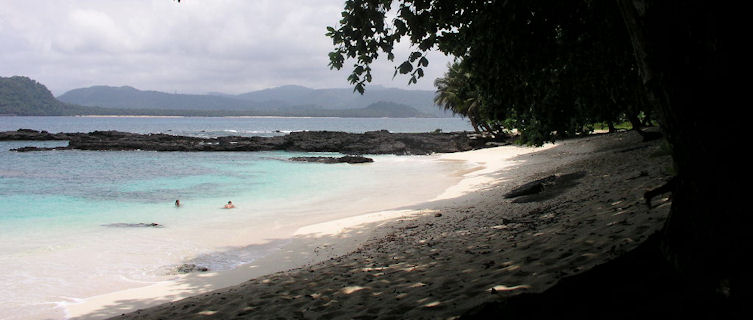
São Tomé e Príncipe Travel Guide
The little-known islands of São Tomé e Príncipe provide unspoiled beauty and isolation from the world, in a way that's now rarely found anywhere else. The islands lie on an alignment of once-active volcanoes, with rugged landscapes, dense forests and palm-fringed beaches, situated 250km (155 miles) off the coast of West Africa.
In São Tomé e Príncipe, exotic birds inhabit tropical jungles on what is one of Africa's smallest countries. The picturesque town of São Tomé lies exactly on the equator, with a smattering of colonial Portuguese architecture and attractive national parks. The history of the islands, meanwhile, is dominated by the slave trade and slave-worked plantations.
The main appeal of São Tomé is perhaps its unrivalled peace and quiet. Little more than a couple of specks adrift off the coast of Gabon, the pair of volcanic islands are laid-back to say the least. The compelling Portuguese-Creole culture here revolves around leve leve, which roughly means 'take it easy'. Within a few hours of landing, the thought of rushing anywhere will seem like a distant memory.
If you can muster the energy to do much beyond laying on the pristine beaches edged by swaying palm trees, you'll find the slopes of the volcanic peaks worthy of climbing for their dramatic vistas, as well as scintillating tracks through the otherworldly rainforest. There are multiple species of birds to be spotted, as well as endemic plants, and the exhilarating possibility to go whale watching. Aside from whales, turtles abound in the waters surrounding the islands.
A good wander will bring you to both timeless fishing villages and historic buildings from the colonial era. Of these, roças, or plantations, are the most iconic man-made sights.
The locals are keen to preserve the islands' natural wonders, and so the still burgeoning tourism industry is largely subservient to the ecological priorities of the inhabitants. None of your faceless resorts here. Expect family-run guesthouses and lodges perched on the edge of the jungle.
Do you have any Feedback about this page?
© 2025 Columbus Travel Media Ltd. All rights reserved. No part of this site may be reproduced without our written permission, click here for information on Columbus Content Solutions.








 You know where
You know where